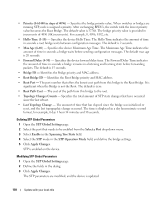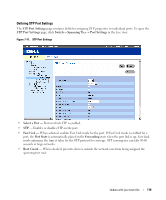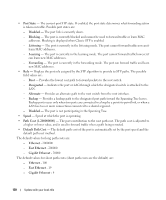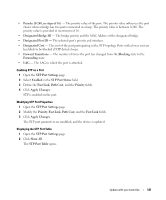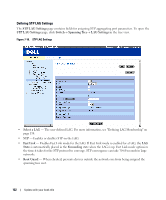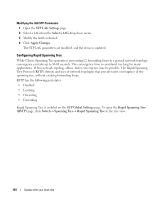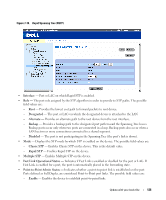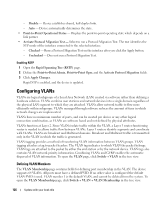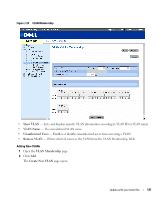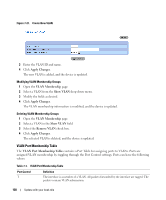Dell PowerConnect 2848 User's Guide - Page 123
Path Cost 1-20, Designated Port
 |
View all Dell PowerConnect 2848 manuals
Add to My Manuals
Save this manual to your list of manuals |
Page 123 highlights
• LAG State - Current STP state of a LAG. If enabled, the LAG state determines what forwarding action is taken on traffic. If the bridge discovers a malfunctioning LAG, the LAG is placed in the Broken state. Possible LAG states are: - Disabled - The LAG link is currently down. - Blocking - The LAG is blocked and cannot be used to forward traffic or learn MAC addresses. - Listening - The LAG is in the listening mode and cannot forward traffic or learn MAC addresses. - Learning - The LAG is in the learning mode and cannot forward traffic, but it can learn new MAC addresses. - Forwarding - The LAG is currently in the forwarding mode, and it can forward traffic and learn new MAC addresses. - Broken - The LAG is currently malfunctioning and cannot be used for forwarding traffic. • Role - Displays the port role assigned by the STP algorithm to provide to STP paths. The possible field values are: - Root - Provides the lowest cost path to forward packets to the root switch. - Designated - Indicates the port or LAG through which the designated switch is attached to the LAN. - Alternate - Provides an alternate path to the root switch from the root interface. - Backup - Provides a backup path to the designated port path toward the Spanning Tree leaves. Backup ports occur only when two ports are connected in a loop by a point-to-point link, or when a LAN has two or more connections connected to a shared segment. - Disabled - The port is not participating in the Spanning Tree. • Path Cost (1-200000000) - Amount the LAG contributes to the root path cost. The path cost is adjusted to a higher or lower value, and is used to forward traffic when a path being rerouted. The path cost has a value of 1 to 200000000. If the path cost method is short, the LAG cost default value is 4. If the path cost method is long, the LAG cost default value is 20000. • Default Path Cost - When selected, the LAG path cost returns to its default value. • Priority - The priority value of the LAG. The priority value influences the LAG choice when a bridge has two looped ports. The priority value is between 0-240, in increments of 16. • Designated Bridge ID - The bridge priority and the MAC Address of the designated bridge. • Designated Port ID - The port priority and interface number of the designated port. • Designated Cost - The cost of the designated bridge. • Forward Transitions - The number of times the LAG State has changed from the Blocking state to a Forwarding state. Update with your book title 123



